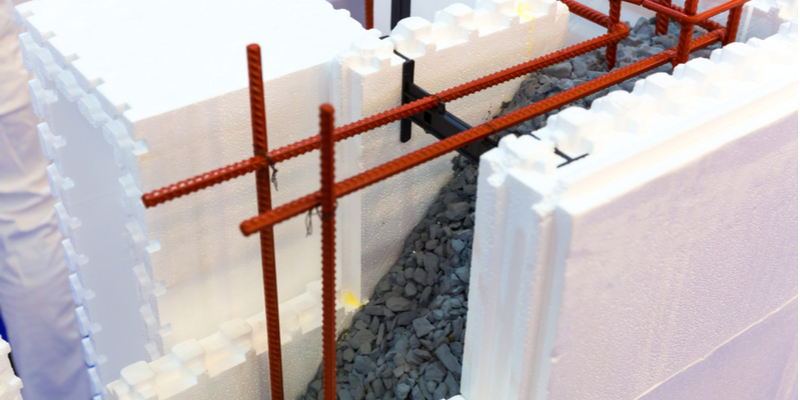Toronto sees some cold temperatures in the winter, and the materials used to construct everything from your home to your patio must be able to withstand some pretty frigid temperatures. Some materials are far better suited to handle cold weather than others.
Best Building Materials for Cold Weather: Your Foundation Materials
Your foundation is the first place where heat loss can occur, and the level of heat loss experienced is impacted by surrounding soil conditions. Ensuring your home has good drainage and foundation waterproofing is so important to prevent issues caused by Toronto’s cold weather.
By ignoring the importance from the get-go, you will likely encounter issues down the road. One way to prevent surface moisture is to get rid of low spots around your building’s foundation. If the low spots are not removable, it’s recommended to clean out these spots at least 2x per year.
Using Insulation Foam to Prepare Your Home for Cold Weather
Finding the best insulation foam for a building is another important component to keeping your home warm and in good condition in the winter. R-value stands for the amount of insulation power a foam has to offer. A higher R-value signals more insulation power.
Insulated Concrete Forms (ICF)
ICF is growing in popularity. It is a hollow foam block made of expanded polystyrene (EPS) and steel reinforced concrete. These blocks are stacked in the shape of the exterior walls of your building and then usually reinforced with a steel rebar before being filled with concrete. From there, ICFs are covered with rock, brick, stucco or a variety of other building materials.
While a plywood home is going to cost less money than ICF, there are many benefits to spending a little more. For one, ICF homes tend to save homeowners as much as thirty to seventy percent in energy consumption and costs, offering benefits to both the consumer and the environment.
Is Brick a Good Building Material in Toronto?
As long as bricks are not applied during cold weather, they make a great building material for cold weather. This is especially true if they are properly insulated and taken care of. Adding the right insulation injection is key to keeping heat in and cold out. In addition, it is important to make sure bricks are free from cracks and other damages prior to winter. Otherwise, moisture can enter through weak spots and remain trapped there. As temperatures fluctuate, the water will expand (freeze) and decrease in volume (melt), a process known as the freeze-thaw cycle. This puts a lot of pressure on brick and will eventually cause it to crack and crumble.
Cold Roof
Cool roof construction is another option suggested to combat cold weather issues from the roof down. A cool roof involves higher insulation values paired with light colored roofing materials. This has a noticeable impact on snow melt rate. Raised insulation tends to reduce potential heat loss from a building’s interior, while light colored materials tend to reduce solar absorbance. By combining these two elements, you can impact the amount of water present following a period of heavy snow.
In addition, adding several thin layers of living greenery to your roof can help combat cold weather. This adds roughness and reduces sliding by absorbing rainwater runoff. In addition, it provides extra insulation. Of course, it’s important that your roof can withstand the extra weight that will come with adding vegetation to your rooftop, especially as it soaks up moisture and becomes heavier during cold and wet months.
Homes Built for Toronto
As experienced Toronto masons, we have the skills and knowledge to build and repair everything from exterior walls to patios that can withstand Toronto’s coldest winter weather. Contact us today to learn more.

